By Mark Ellis –
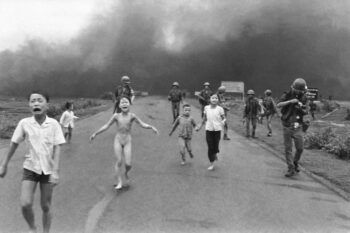
She was only nine-years-old when her village in South Vietnam was hit by a U.S.-coordinated airstrike that dropped four napalm bombs near the CaoDai temple where her family took refuge.
As she ran down Highway 1, with the backside of her body coated in napalm, she screamed as the sticky substance adhered to her skin and burned away her flesh.
“I was on fire, badly in need of help,” recounts Kim Phuc, in her riveting book Fire Road (Tyndale Momentum). “Years later I would learn that this was no ordinary fire.”
Indeed, water boils at 212 degrees, a building ablaze may reach 1500 degrees, but napalm burns away one’s skin at 5,000 degrees Fahrenheit.
“Too hot, too hot!” she screamed as she ran down the dirt road. The napalm burned off her clothing, working its way deeply into her skin. A 21-year-old AP photographer in combat fatigues, Nick Ut, captured the horror of the moment in an iconic photograph that made headlines around the world.
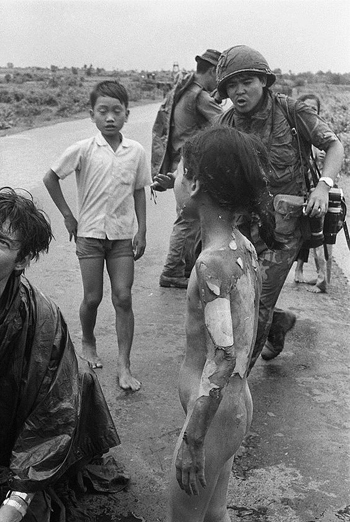
A BBC reporter doused her with water from his canteen, but because napalm combusts with anything containing oxygen, she caught fire all over again.
Then she fainted.
Comatose upon her arrival at Children’s Hospital in Saigon, authorities placed her in the morgue after making an assessment that her third and fourth-degree burns could not be survived.
A few days later, Kim’s parents found her in the morgue and were shocked to discover she was still alive. “Sir!” her father cried out. “My daughter was placed in the morgue but she is still alive. You must help us!”
They transferred Kim to the “Barsky Unit,” a center for reconstructive surgery in Saigon that had already treated 3500 children wounded in the war. While there, Kim received the first blood transfusion from her mother.
“When the first drop of ma’s blood entered that vein, my body responded and my vital signs improved. Everyone knew I was going to survive. Still I had a long road ahead,” she noted in her book.
Released after 14 months, Kim returned home to find her home and village ravaged by the war. They had little food and showered in a hose-fed puddle. Kim was in constant, debilitating pain as a result of her burns.
Because of the bumpy red, buffalo-hide scars covering a third of her body, she thought she 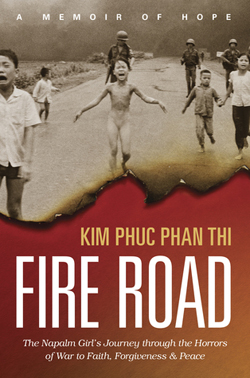 was unfit to be loved and would never marry.
was unfit to be loved and would never marry.
Growing up, Kim attended a Cao Dai temple, a Vietnamese monotheistic religion that recognizes Cao Dai as the creator of the universe. Followers maintain that God revealed himself to three spirit mediums on Christmas Eve, 1925. The three mediums became instrumental in developing the faith, which involves prayer, veneration of ancestors, vegetarianism, and nonviolence. The symbol for the religion is the Divine Eye.
After the war ended and the communists took over, Kim threw herself into her schoolwork and her religious activities, attending Cao Dai services at the temple four times a day: at six in the morning, noon, sunset, and midnight.
“I would pray the expected prayer,” she notes in her book. “To whom I was praying, I was not entirely sure. But I was faithful to speak the words.”
Despite her intense devotional practice, inner peace eluded her. When she left the Cao Dai services, she felt “every bit as tumultuous as I had 90 minutes earlier.”
At 16, Kim made three attempts to escape Vietnam, but all three tries failed. Disheartened, she threw herself into her schoolwork with the goal of attending medical school.
One day she got pulled out of school by government officials from Hanoi, who had been searching to find out if the ‘napalm girl’ was still alive. Soon she found herself in a hotel in Saigon crammed with reporters and cameras.
They all wanted to know how she was doing. Then one reporter asked, “Kim Phuc, do you hate the Americans for what they did to you as a child?”
She explained that it was actually a South Vietnamese pilot who dropped the napalm bombs that day, not Americans.
A few years later she found out the government-assigned translators never translated what she actually said, but spouted lines given to them by higher-ups.
Kim was taken out of school more and more, as the government began to use her for propaganda purposes, usually to vilify Americans. With each absence from school, she got further behind in her schoolwork and ultimately had to give up her dream of becoming a pediatrician.
Forced to leave school, she was overwhelmed with hopelessness, “ready to leave this life.” She could not turn to the gods of her religion. After years of unanswered prayers, it was clear to her that either they were “nonexistent or they did not care to lend a hand.”
One Saturday afternoon she went to Saigon’s central library, partly to hide from government officials. She found herself in the religion section and began to flip through various religious books when she stumbled upon the New Testament.
In the book of John, she discovered that Jesus presented himself as the way, the truth, and the life, that there was no other way to get to God but through him.
What? How can this be? she wondered. There are thousands of ways to get to God; everyone knows this fact.
She also learned that Jesus had suffered in defense of his claims. Why would he do these things, she wondered, if he was not in fact God? Could he help her make sense of her pain and suffering?
At the moment when Kim wrestled with these questions, God placed someone unexpected in her path.
It seems Kim was living at the time with her sister Loan and her family. Loan’s son needed surgery and went into the hospital for nearly two weeks. A cousin related by marriage, Pastor Anh, came every day for 12 days to pray with the family.
After Kim met Pastor Anh, she began to pepper him with questions. “Why must Jesus be the only way to God? What about all the other gods?
Pastor Anh told her how missionaries from the U.S. and England came to his village and brought Bibles translated into Vietnamese and explained how to have a personal relationship with Jesus.
“But Anh, what about the napalm attack and these wretched burns I was made to endure? Where was this ‘God’ when I was left for dead? Why did he not spare me from years of pain…”
Anh studied her pleading expression and the tears in her eyes. Then he said, “I think you must go to church.”
During Kim’s first visit to a Christian church, she heard the pastor talk about how husbands are called to love their wives as Christ loves the church. “We are the bride of Christ,” the pastor said, a phrase that resonated with Kim, “like sugar to her soul.”
Could it be that Jesus wanted me for his bride? Could this “Prince of Peace” be the prince I have longed for my entire life?
Over the next several weeks, there as a battle for Kim’s soul. One Saturday night, despairing of the pain that filled her, body and soul, she began to sob uncontrollably. “God! Where are you?” she cried. “If you will give me a friend, just one person who knows you and who can help me know you, then I will agree not to take my life.”
She gave God 24 hours to uphold his end of the deal.
The next morning she went to church and when she entered the sanctuary, her eyes fell on one woman sitting alone in a center pew. She approached the end of the woman’s pew cautiously, then stood frozen in the aisle, staring at the woman.
The woman looked over at her and said, “Good morning. I am Thuy. Have you come to worship today?”
Thuy was seven years older than Kim and had been following Jesus most of her life. The two began to meet regularly and became fast friends. Thuy taught her how to study the Bible and how to pray.
As she began to become more comfortable with the idea of becoming a Christian Kim faced one uncomfortable fact. If she pledged her allegiance to Jesus, her family would disown her.
After months of studying the Bible, Kim attended a Christmas Eve service in 1982. The pastor began his remarks by asking a question. “What year is it?”
“1982,” someone replied.
“Yes! Now, tell me why it is 1982.”
No one said a word, then the pastor continued. “It is 1982 because 1982 years have passed since the Messiah came to earth…The Incarnation was so significant an occurrence that humankind decided to mark time according to it.
“This Christmas is not about the gifts we carefully wrap and give to each as much as it is about one Gift in particular, who was wrapped in human flesh and given from God to us. The Gift is Jesus…”
At the pastor’s invitation to accept Jesus as her Lord and Savior, Kim nearly jumped out of her seat. She was truly born again!
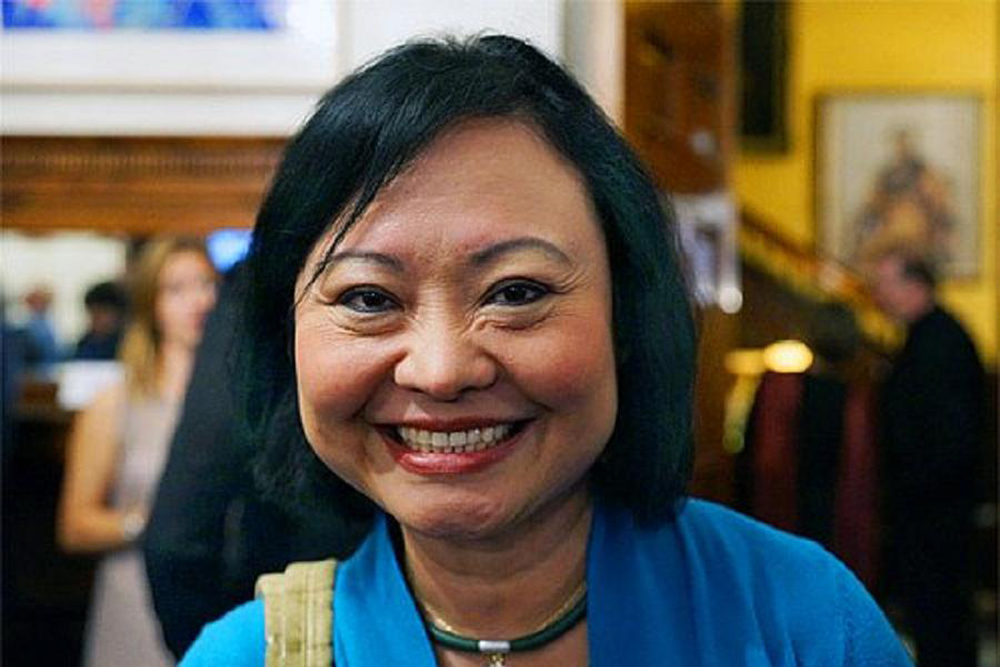
In the book, Kim recounts the rejection she experienced from her family, how the government shut down the church she had been attending, and her government-sanctioned trip to Cuba to resume her education.
At a student dorm in Cuba, she lived on a floor with 24 girls that shared one shower, one toilet, and one sink. Due to water rations, water only flowed from the tap for an hour each day, and it was never the same hour two days in a row. Because she had to catch a bus an hour before classes began, she never had time to eat breakfast once in her six years in Cuba.
Not only is Kim’s book a bold witness for her faith in Christ, it also presents the despairing conditions wrought by communist policies in Vietnam, the former Soviet Union, and Cuba. “I so appreciate freedom. My whole life I was seeking for that,” she notes.
She met her future husband, Toan, in Cuba, a man who fell madly in love with her and was willing to overlook the massive scarring that covered much of her body. The downside was his smoking, drinking, and disparagement of her faith.
“I can’t believe this virgin lady had a child and that child is supposed to be God,” he told her. “It is impossible.
“If this Jesus could save people, then why did he not save himself when he was hanging on a cross?” he asked.
Kim’s book recounts the young couple’s defection to Canada and the wonderful way God led Toan to find the truth – along with most of Kim’s family.
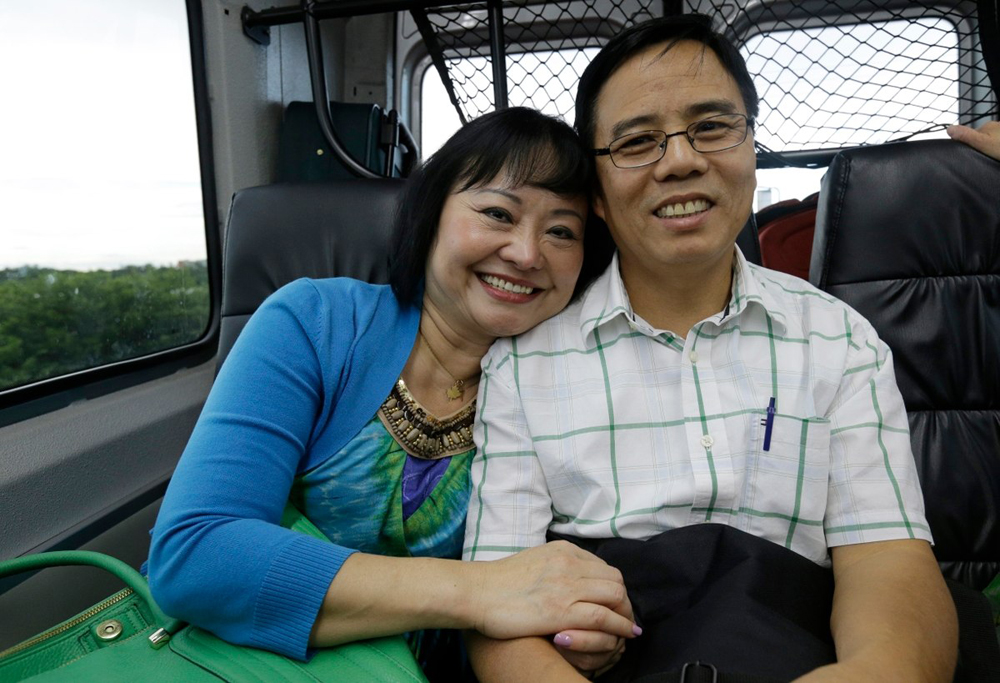
One of the wonderful surprises is the fact that the American military officer who coordinated the attack that almost killed her became a pastor, John Plummer. They had an emotional meeting with one another and Rev. Plummer asked for forgiveness.
“The moment I met Rev. Plummer, I saw him cry. He was sorry. He meant it. I was so thankful for that moment. It was a beautiful moment,” she says.
“We became best friends. God has healed the scars in my heart…how dark and bitter and angry and hateful I was. Now Jesus fills my heart with love and compassion.”
Kim has not been able to meet the South Vietnamese pilot who dropped the napalm bombs. “I pray for the pilot who dropped the bomb every single day. My dream is one day I will see him in person, just him and me, no media, and I can give him a big hug and tell him I love him,” she says.
In the book, she also reveals her remarkable discovery – years later – about why God allowed her to be placed in the morgue when she wasn’t dead.
After 11 laser treatments in the last few years, the pain Kim endures on a daily basis is about half of what it once was.
“The Lord put me on that road and he had a plan for me. I say Lord, it doesn’t matter how much I suffered, now I have the greatest reward that my entire family got saved.
“I learned to forgive. I learned to move on. It is a really true story about how much I suffered. The Lord is so real to me. He answered my prayers.”
If you want to know more about a personal relationship with God, go here
To learn more about the foundation started by Kim Phuc, go here



